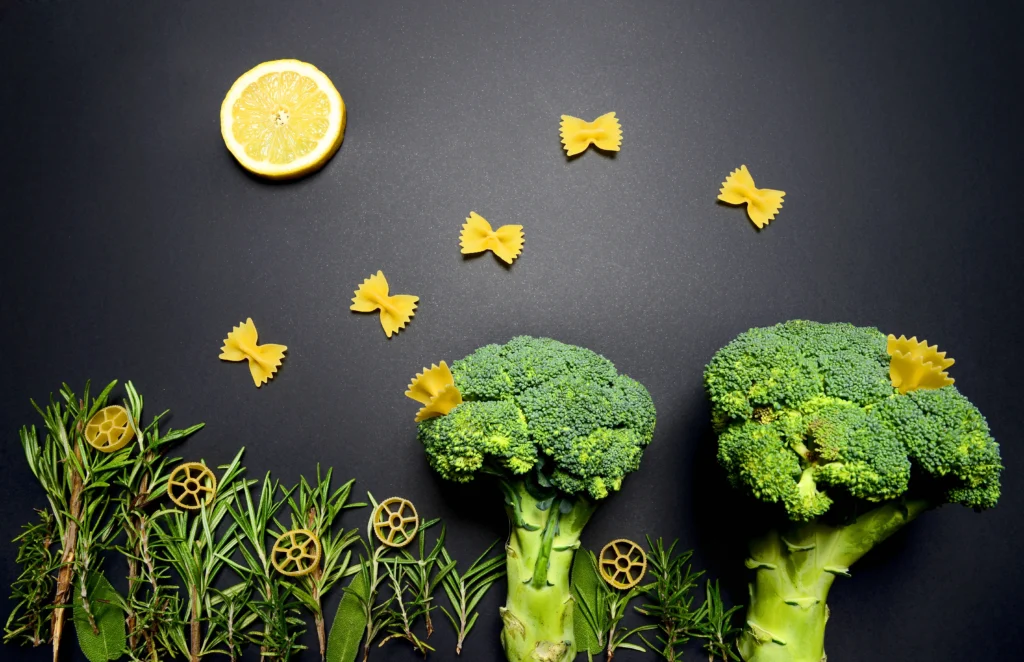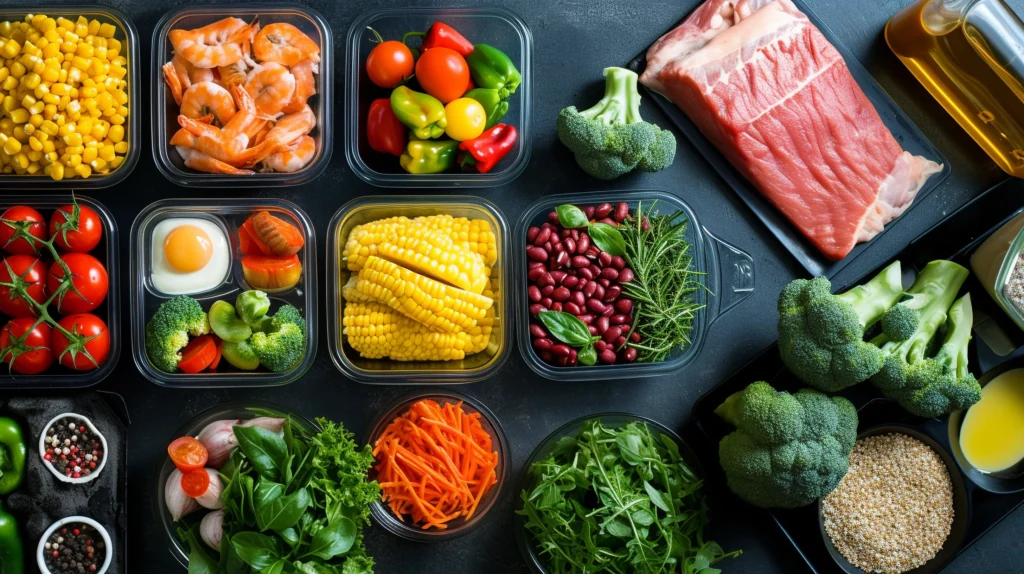I. Dive into the Whole 30 Diet Revolution: Is it Right for You?
Stuck in an unhealthy cycle? Sluggish & foggy? The Whole30 Diet could be your key. Reset your body & relationship with food in 30 days. Ditch processed junk, discover what fuels you, & feel amazing! #Whole30Diet
But hold on there, cowboy! Before you jump headfirst into a month-long food fiesta, let’s dissect what the Whole30 is all about. Forget crash diets and calorie counting, the Whole30 is a revolutionary 30-day elimination program designed to identify food sensitivities, break unhealthy habits, and empower you to reclaim control over your health.
Sound intriguing? Great! Because we’re about to uncover the secrets of this transformative journey. But first, let’s address the burning question:
What exactly is the Whole 30 diet?
Think of it as a 30-day experiment where you temporarily ditch sugar, grains, legumes, dairy, and alcohol. Yep, you read that right. It’s a commitment, but trust me, the potential benefits are worth the temporary sacrifice.
So, what are the key goals and benefits you might ask?
- Shedding those unwanted pounds: Let’s be honest, weight loss is often a motivator. While not strictly a weight-loss plan, the Whole30’s focus on whole, unprocessed foods naturally leads to healthier choices and potential weight reduction.
- Smoothing out your gut: Struggling with bloating, indigestion, or other digestive woes? The elimination of common gut irritants can bring welcome relief and restore balance to your digestive system.
- Unleashing your inner Energizer Bunny: Feeling constantly drained? The Whole30 can boost your energy levels by ditching processed sugars and promoting balanced, nutrient-rich meals.
- Kissing goodbye to those mood swings: Food can seriously impact your mood. The Whole30 helps identify any dietary culprits contributing to emotional dips and fosters a more stable, positive outlook.
- Unmasking hidden food sensitivities: Ever wonder why you feel crummy after certain foods? The reintroduction phase of the Whole30 sheds light on potential food sensitivities, empowering you to make informed choices about what fuels your body best.
But wait, hold your horses! Before you declare this a magic bullet, let’s explore
who the Whole 30 is truly for:
- Individuals seeking to improve their overall health and well-being.
- Folks curious about identifying potential food sensitivities.
- Anyone ready to break free from unhealthy eating habits and build a sustainable relationship with food.
However, it’s not a one-size-fits-all solution.
The Whole 30 Diet might not be the best fit for:
- Individuals with certain medical conditions requiring specific dietary management (always consult your doctor before embarking on any new dietary program).
- Pregnant or breastfeeding women (nutritional needs differ during these stages).
- People with restrictive eating disorders or a history of disordered eating (prioritize your mental health first).
Remember, every journey is unique. Before diving in, consider your individual needs, medical history, and lifestyle. Do some research, read success stories, and most importantly, listen to your body.
Ready to explore the Whole 30 further? Buckle up, because in the next section, we’ll delve into the heart of the program: the nitty-gritty of what you can and can’t eat to embark on your personal food freedom journey.
II. The Whole 30 Diet Rules: What You Can and Can’t Eat:

Ready to embark on the Whole 30 diet adventure? Buckle up, because it’s a 30-day deep dive into the world of real, unprocessed food! But before you stock up on everything in sight, let’s break down the crucial question: what can you actually eat (and what’s left on the “no thanks” list)?
Hitting the Pause Button on Sweet Treats:
Sugar, both natural and artificial, takes a temporary vacation on the Whole30. That means candy, cookies, cakes, soda, and even seemingly innocent fruit juices are out. It’s not just about calorie control, though. Sugar can wreak havoc on your energy levels, mood, and gut health. Ever felt that afternoon slump after a sugary snack? That’s your body saying, “Thanks, but no thanks!”
Grains: Gluten-Free or Not, They Take a Break:
Wheat, oats, barley, rye, and even their gluten-free counterparts like quinoa and brown rice, are off-limits for the 30 days. Why? Well, grains can trigger inflammation and digestive issues for some people. Plus, it’s a chance to explore the amazing world of vegetables and fiber-rich nuts and seeds that often get overshadowed by their grainy counterparts. Think colorful stir-fries, hearty salads, and satisfying nut-based “breads” – your taste buds won’t miss the grains, we promise!
Beans, Peanuts, and Lentils: A Temporary Farewell:
Legumes like beans, peas, peanuts, and lentils might surprise you on the “no” list. While packed with protein and fiber, they contain lectins, which can interfere with digestion and nutrient absorption for some individuals. Don’t worry, you’re not protein-deprived! Meat, seafood, eggs, and nuts will be your protein powerhouses during the Whole 30.
Dairy: Saying Cheese… Not This Time:
Milk, yogurt, cheese, ice cream – all delicious, all temporarily off the menu. Dairy can sometimes contribute to inflammation and digestive woes. The good news? There are amazing plant-based alternatives to satisfy your creamy cravings, from almond milk to coconut yogurt. Think about it as an exploration of new flavors and textures!
Alcohol: Cheers to a Temporary Hiatus:
Wine, beer, cocktails – you guessed it, they’re on hold. But before you panic, hear this: alcohol can disrupt sleep, contribute to dehydration, and even interfere with the positive changes your body is experiencing on the Whole 30 Diet. Think of it as a cleanse for your body and mind. You might be surprised at the improved sleep and energy you gain!
Food Additives: Saying No to Hidden Sneaky Stuff:
Carrageenan, sulfites, and other additives might sound mysterious, but they can lurk in processed foods and wreak havoc on your gut health. On the Whole 30, you’ll be focusing on whole, unprocessed foods, so these additives naturally fall away. It’s like giving your body a break from deciphering all those ingredients you can’t pronounce!
Don’t worry, we haven’t forgotten the good stuff! Stay tuned for the next section where we’ll dive into the delicious world of Whole 30-approved foods that will fuel your body and tantalize your taste buds! Let’s embark on this journey together!
Acceptable Foods: Your Guide to Whole 30-Approved Foods
Remember the “no thanks” list? Now let’s turn the page and celebrate the exciting world of Whole 30-approved foods that will nourish your body and tantalize your taste buds! Buckle up, because it’s a delicious adventure:
Protein Powerhouses:
- Meat: Grass-fed beef, pastured poultry, free-range pork, lamb – choose quality meats for optimal nutrition and flavor.
- Seafood: Wild-caught salmon, tuna, shrimp, sardines – dive into the depths of omega-3 goodness and explore variety.
- Eggs: Organic, pasture-raised eggs boast protein, healthy fats, and essential nutrients – a breakfast (or anytime) champion!
Vegetable Rainbow:
- Leafy greens: Kale, spinach, collard greens – pack your plate with these nutrient powerhouses for fiber, vitamins, and minerals.
- Non-starchy veggies: Broccoli, cauliflower, bell peppers, asparagus – endless options to explore color, flavor, and different cooking methods.
- Starchy veggies: Sweet potatoes, winter squash, butternut squash – provide sustained energy and satisfy your cravings with natural sweetness.
Fruittastic Delights:
- Berries: Blueberries, raspberries, strawberries – antioxidant powerhouses bursting with flavor and essential vitamins.
- Citrus fruits: Oranges, grapefruits, lemons – add a refreshing zing and provide vitamin C for boosted immunity.
- Tropical fruits: Pineapple, mango, papaya – exotic flavors and essential vitamins for a taste of sunshine.
Nutty and Seedy Goodness:
- Almonds, walnuts, pecans: Packed with healthy fats, protein, and fiber – perfect for snacking or adding crunch to meals.
- Chia seeds, flaxseeds, hemp seeds: Tiny nutritional powerhouses rich in omega-3s, fiber, and minerals – sprinkle them on salads, yogurt, or smoothies.
- Nut butters: Almond butter, cashew butter, peanut butter (unsweetened, of course!) – creamy protein sources for spreading on veggies, fruit, or enjoying on their own.
Healthy Fat Fiesta:
- Olive oil: Extra virgin olive oil is your go-to cooking and finishing oil, rich in healthy monounsaturated fats.
- Avocado: Nature’s creamy delight, loaded with healthy fats, fiber, and potassium.
- Coconut oil: Use sparingly for cooking or adding tropical flavor, but remember it’s high in saturated fat.
Remember:
- Read labels: Always scan ingredients lists for hidden sugars, additives, or non-compliant ingredients.
- Experiment: Get creative with Whole 30-approved ingredients and discover new flavor combinations and recipes.
- Enjoy the journey: This is about nourishing your body and exploring delicious whole foods, not calorie counting or restriction.
And remember, this is just the beginning! Stay tuned for more tips, tricks, and delicious recipe inspiration to rock your Whole30 journey and discover a world of food freedom and healthy living.
III. The Whole 30 Diet Journey: What to Expect:

So, you’ve embarked on the Whole 30 Diet adventure, ditching the usual suspects and embracing real, unprocessed food. But let’s be honest, it’s not always sunshine and rainbows, right? Buckle up, because we’re diving into the week-by-week rollercoaster of what to expect. Remember, every person’s journey is unique, but knowing what might pop up can help you smooth the ride and stay on track!
Week 1: Adaptation and Cravings (Hold On Tight!)
Ever feel like your body’s throwing a tantrum when you switch things up? Welcome to Week 1! Headaches, fatigue, and intense cravings might show up uninvited. Why? Your body’s adjusting to the lack of its usual sugar and processed food fix. Don’t panic! Drink plenty of water, stay hydrated, and reach for Whole 30 Diet approved snacks like nuts, seeds, or veggies with guacamole. Cravings will subside, we promise!
Week 2: Energy Fluctuations and Emotional Shifts (Brace Yourself!)
Feeling like you’re running on fumes one minute and bursting with energy the next? Week 2 can be a wild ride. Your body’s still adapting, and emotions might swing like a pendulum.
Remember: it’s temporary! Focus on getting enough sleep, prioritize self-care (think relaxing baths or meditation), and don’t judge yourself for feeling all the feels. It’s all part of the Whole30 transformation!
Week 3: Breaking Through and Seeing Results (Woohoo!)
Congrats! You’ve officially reached the turning point. Energy levels stabilize, cravings fade, and you might even see some exciting changes in the mirror or on the scale! Feeling more focused, sleeping better, and experiencing improved digestion? That’s your body thanking you for the healthy makeover. Keep it up! You’re halfway through, and the best is yet to come.
Week 4: Maintaining Momentum and Avoiding Stalls (Don’t Let Up!)
Feeling stagnant? It happens! Plateaus are normal, but don’t let them derail your progress. Switch things up! Try new recipes, explore different protein sources, and get creative with your meals. Remember, variety is key to keeping your taste buds happy and your motivation strong. Need a boost? Reach out to your Whole30 community for support and inspiration. Remember, you’re not in this alone!
Tips for Success: Your Whole 30 Diet Toolkit
Now that you’ve got the inside scoop on the week-by-week journey, let’s equip you with some winning strategies:
- Meal prep: Save time and stay on track by prepping healthy meals and snacks in advance.
- Find your support squad: Join online communities, connect with Whole30 friends, or enlist a buddy to do the journey with you.
- Navigate social events: Be prepared with Whole 30-compliant options or politely decline tempting treats.
- Stay motivated: Set realistic goals, track your progress, and celebrate your non-scale victories.
Remember, the Whole 30 is about more than just food. It’s about reconnecting with your body, building healthy habits, and discovering a world of delicious, nourishing food. Embrace the ups and downs, stay positive, and get ready to experience the incredible transformation that awaits!
Now go forth and conquer your Whole 30 Diet journey!
IV. The Reintroduction Phase: Discovering Your Food Freedom:

The Whole30 is more than a 30-day reset; it’s a discovery mission! And the real adventure begins after those 30 days with the reintroduction phase. Buckle up, because you’re about to become a food detective, uncovering which foods work best for your unique body.
Why Reintroduction Matters:
Remember all those off-limits goodies you temporarily put on hold? Now’s your chance to bring them back, one by one, like a detective interrogating suspects. Ever felt foggy after that afternoon latte? Or woken up with bloating after a slice of pizza? The reintroduction phase helps you connect the dots between foods and how they make you feel.
The Reintroduction Rules:
Think of your body as a science lab, and reintroduction as a well-controlled experiment. Here’s the protocol:
- Go solo: Reintroduce one food group at a time, for at least 3 days, giving your body time to respond.
- Start small: Begin with a tiny portion (think pea-sized) to observe any subtle reactions.
- Keep it clean: During reintroduction, stick to your Whole 30-approved diet for the rest of your meals. This helps isolate the effects of the reintroduced food.
- Track it all: Log every bite and how you feel physically and emotionally for those 3 days. Headaches, fatigue, digestive woes – write it all down!
The Food Group Suspects:
Now, let’s break down the reintroduction suspects one by one:
Grains: Gluten-free or not, introduce them slowly. Do you experience brain fog or joint pain after bread? You might have some sensitivity.
Legumes: Beans, lentils, peanuts – tread carefully. Ever feel gassy or bloated after a bowl of chili? They could be the culprit.
Dairy: Cheese, yogurt, milk – listen to your gut (literally!). Does dairy trigger breakouts or digestive discomfort? Pay close attention.
Sugar: Honey, maple syrup, desserts – introduce them mindfully. Do you crash after sugary treats or experience mood swings? Sugar might be playing a role.
Alcohol: Wine, beer, cocktails – proceed with caution. Does alcohol disrupt your sleep or leave you feeling sluggish? Consider its impact on your well-being.
Remember: Your body is unique, so there’s no one-size-fits-all answer. Pay attention to your individual reactions and experiment to discover what works best for you.
Decoding Your Food Fingerprint:
After reintroducing each group, analyze your detective notes. Did a suspect trigger unwanted symptoms? It’s time to consider limiting or eliminating it for long-term health. Did some foods make you feel amazing? Congratulations, you’ve found some nutritional allies!
Building Your Food Freedom Plan:
Based on your detective work, it’s time to craft your personalized food freedom plan. This isn’t about restriction, but about conscious choices. Opt for foods that nourish your body and make you feel your best.
Remember:
- Balance is key: Don’t demonize entire food groups, but find a balance that works for you.
- Listen to your body: It’s always the wisest guide.
- Enjoy the journey: Food freedom is about rediscovering the joy of healthy eating, not deprivation.
The Whole30 reintroduction phase empowers you to take control of your food choices and unlock your food freedom. Embrace the detective work, listen to your body, and create a personalized plan that fuels your health and happiness. Happy reintroducing!
P.S. Don’t forget to consult a healthcare professional for personalized guidance if needed. This article is for informational purposes only.
Whole 30 Diet Wrap-Up: Food Freedom Awaits!
Thirty days flew by, didn’t they? Remember that initial sugar-detox headache or the day you aced a craving without batting an eye? The Whole30 diet can be an eye-opening, body-renewing experience, and you did it! But the journey doesn’t end here. So, where do you go from here?

Remember, the Whole 30 Diet wasn’t just about weight loss (although that might be a welcome bonus!). It was about reconnecting with your body, discovering food sensitivities, and building a healthier relationship with food. That means the real magic happens beyond day 30.
Here’s how to make your success stick:
- Keep the good stuff going: Don’t ditch all the Whole 30 Diet principles just because you can finally have that glass of wine (although, maybe savor it!). Focus on the nutrient-rich, unprocessed foods you discovered and loved. They’re your foundation for long-term health.
- Reintroduce mindfully: Remember those reintroduction rules? They’re your guide to identifying potential food sensitivities. Pay attention to how your body reacts to each food group and adjust your diet accordingly. You might find you can happily tolerate some things in moderation, while others are better left on the “sometimes” list.
- Don’t stress perfection: Life happens, and sometimes pizza nights or birthday cake call your name. That’s okay! Don’t get discouraged. Just get back on track the next day. Remember, it’s about progress, not perfection.
- Find your tribe: Surrounding yourself with others who understand and support your journey can make a huge difference. Join Whole 30 Diet online communities or find local groups for encouragement and recipe inspiration.
The Whole 30 might be over, but your journey to food freedom and a healthier you has just begun. Embrace the newfound knowledge, celebrate your accomplishments, and remember: you have the power to make choices that nourish your body and soul. Now go out there and conquer the world, one delicious, healthy bite at a time!
Want to learn more?
- Explore the National Institutes of Health’s Dietary Guidelines for Americans for evidence-based nutrition advice: https://www.ncbi.nlm.nih.gov/pmc/articles/PMC8713704/
Remember, consulting a registered dietitian or healthcare professional can personalize your journey and answer any specific questions you have.
So, tell me: what’s your biggest takeaway from the Whole 30 Diet? What healthy habits will you carry with you moving forward? Share your thoughts in the comments below and let’s keep the conversation going!
This may interest you: Intermittent Fasting Benefits Beyond the Hype